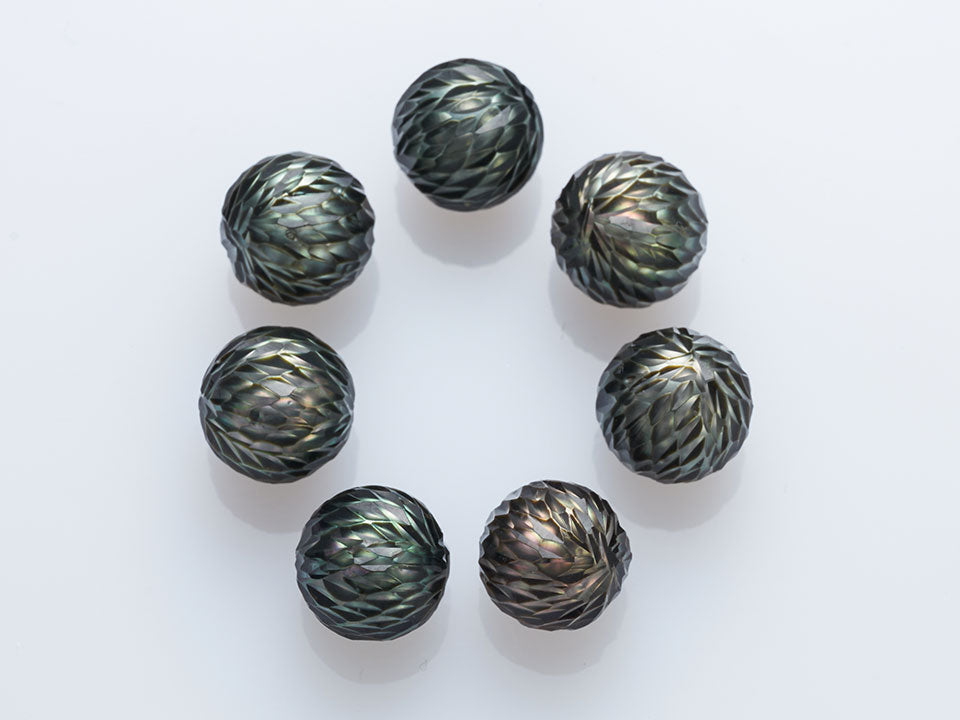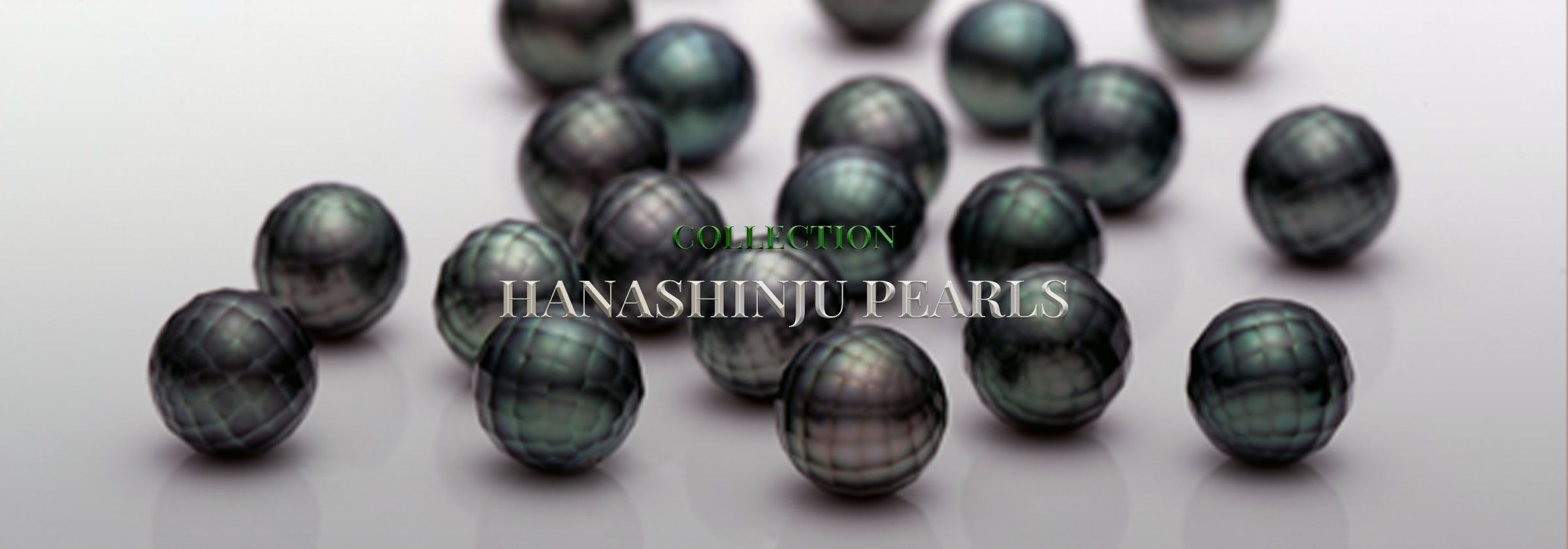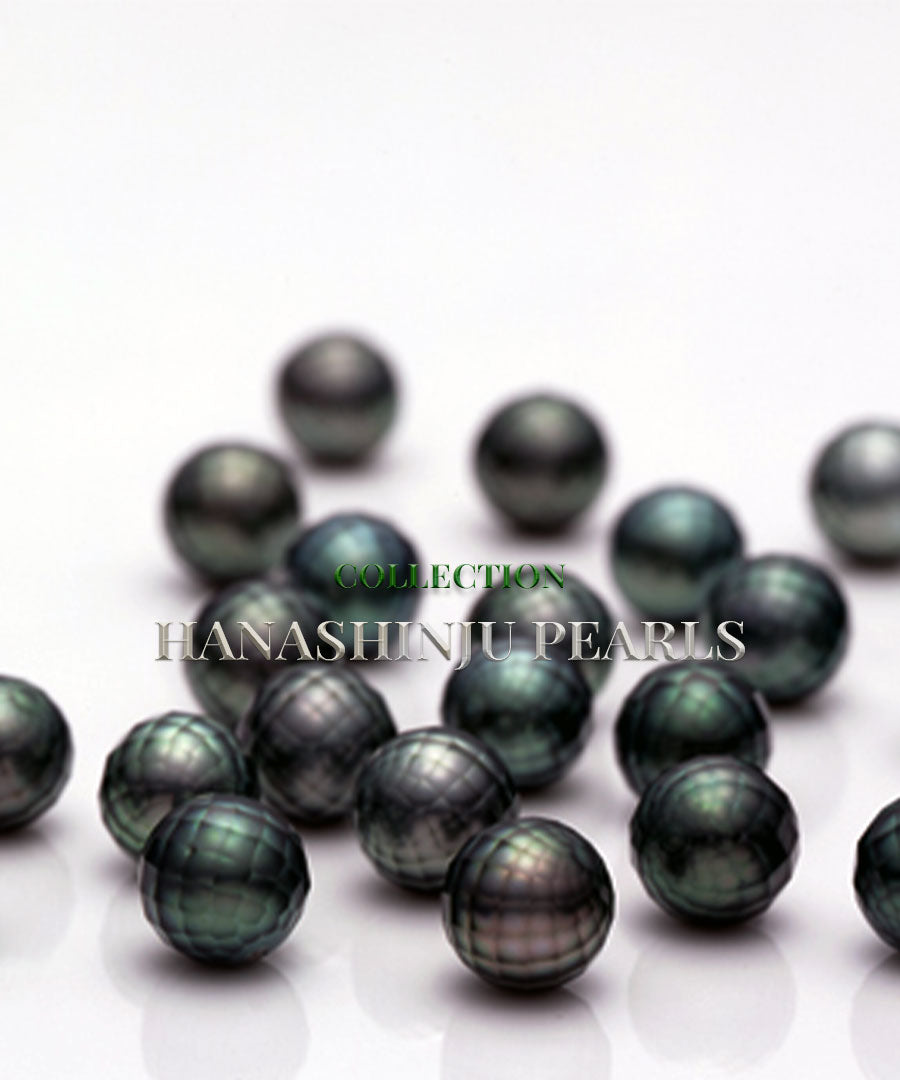HANASHINJU PEARLS
Hanashinju pearls, originating from Japan, bear a unique legacy crafted by Kazuo Komatsu, a visionary diamond cutter. The distinctive faceting process transforms pearls into mirror ball-like shapes which captivates viewers with an irresistible luminosity.
The innovative Hana Shinju (Faceted Pearl) was the world's first carved pearls that introduces a shine and texture distinctly different from traditional pearls, setting the stage for a revolutionary exploration into the realm of pearl craftsmanship.
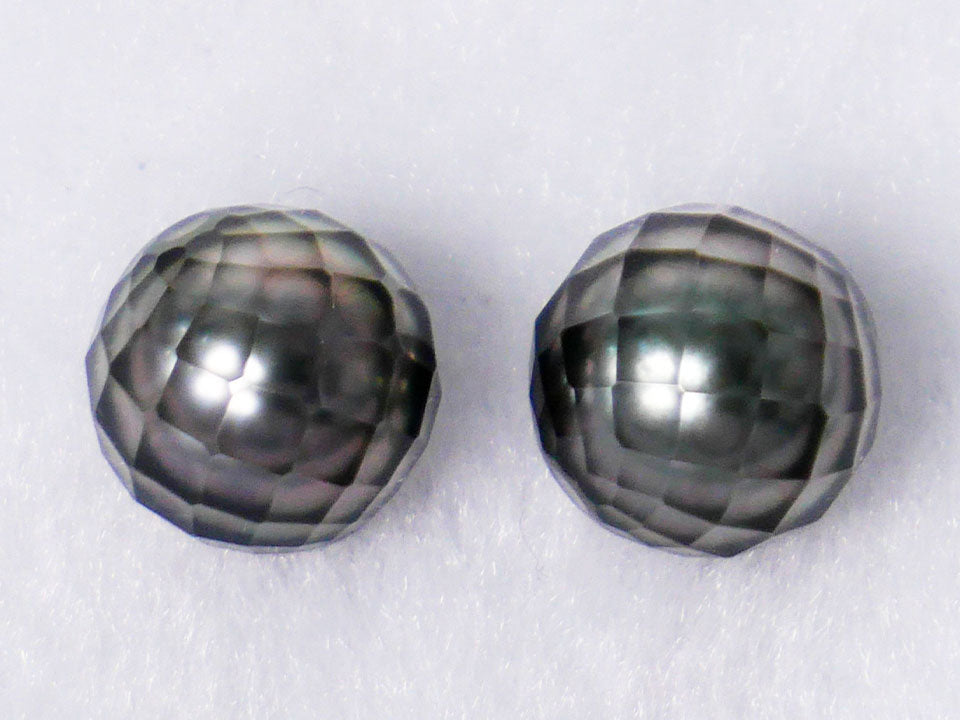
Origin
In 1992, the first fully faceted pearl stunned its creator, Kazuo Komatsu. Having dedicated extensive efforts to perfecting pearl faceting techniques, he was surprised by the mysterious and exceptional brilliance of the pearl. This discovery led to the christening of the faceted pearl as "Hana Pearl," symbolizing 'gorgeous and brilliant' in Japanese.
The outstanding glow in the nacre on the faceted surface flooded the pearl with a sublime light, marking a ground-breaking moment in pearl craftsmanship.
Market Evolution
The introduction of faceted pearls faced initial challenges in the Japanese market, where the ideal pearl traditionally leaned towards smooth, round shapes. Despite skepticism, curiosity gradually piqued, and faceted Hana Pearls garnered recognition worldwide, challenging conventional perceptions of pearl aesthetics.
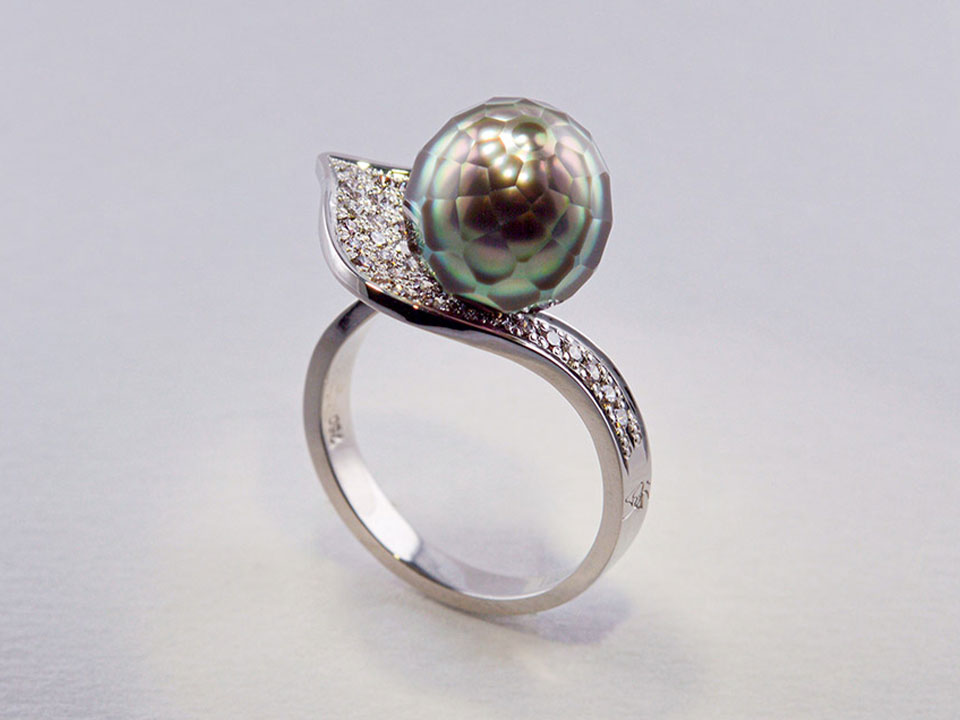

Qualities
Size & Color: Hanashinju pearls, versatile in size and color, can be produced from natural pearls with sufficient nacre depth. This unique feature preserves the shape and color diversity of various natural pearls, allowing for faceted versions in any natural pearl hue.
Lustre: They present a sharp glare while offering wonderful transparency, creating an impression that another pearl is contained within. This lustre appears to intensify in dimly lit spaces, adding a captivating dimension to the allure of Hanashinju pearls.
Value
The crafting process of faceted pearls demands meticulous precision, especially due to the limited nacre depth. Carving requires a delicate touch, making these pearls exceptionally rare and valuable. Their unique combination of innovative craftsmanship, size variability, and color customization enhances the rarity and desirability of Hanashinju pearls in the world of jewelry.
